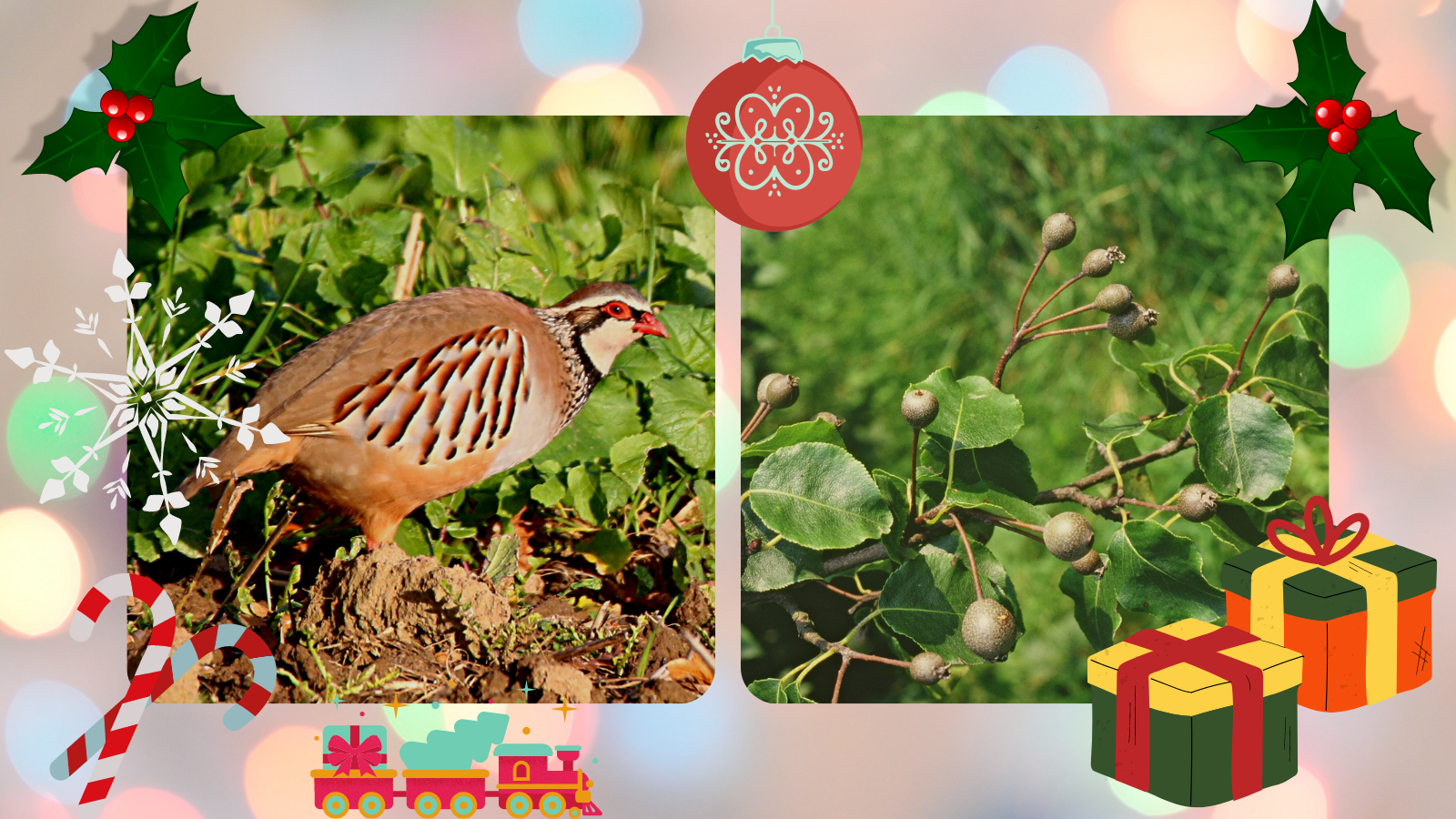
The 12 Days of Christmas at Darwin Tree of Life
To mark the 12 days of Christmas (from 25th December through to January 6th) we have reimagined the traditional “12 Days of Christmas” song with species being genome sequenced as part of the Darwin Tree of Life project. All these species have either had their genome sequenced or had samples collected in 2021 for sequencing in the new year.
12 marine worms
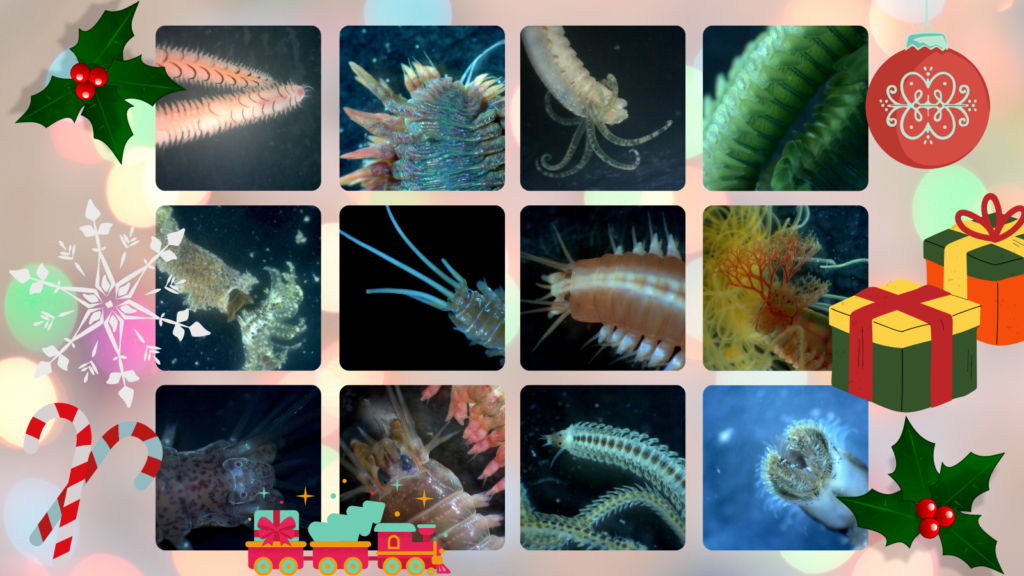
All images taken under the microscopes of the Marine Biological Association. The species are (left to right, top to bottom): Acholoe squamosa, Alitta virens, Amphicteis midas, Eulalia clavigera, Ficopomatus enigmaticus, Hyalinoecia tubicola, Neanthes fucata, Neoamphitrite affinis, Nereis zonata, Perinereis cultrifera, Phyllodoce mucosa and Sabellaria alveolata.
For more on these marine worm species, read our article.
11 lepidoptera
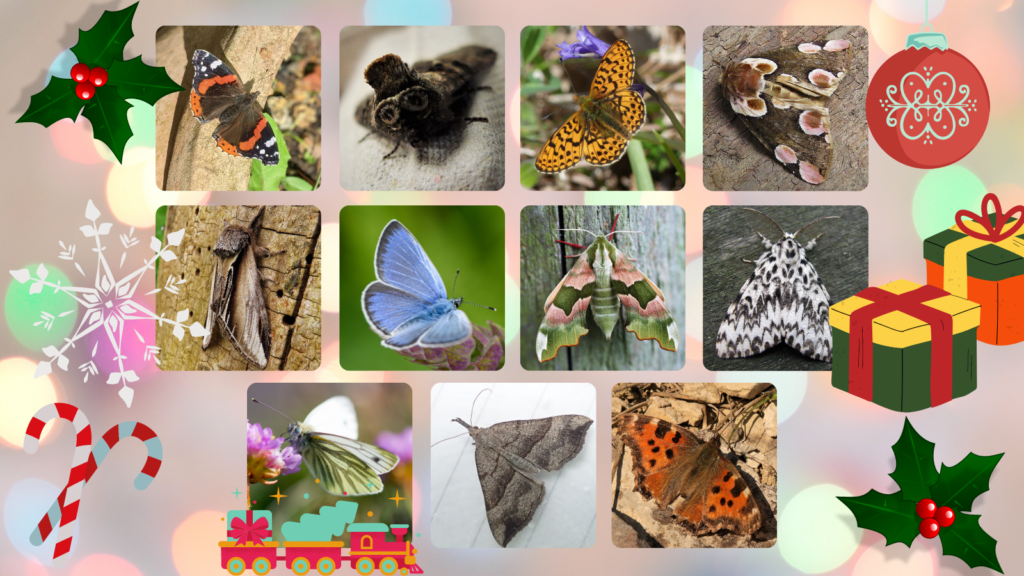
These species are (left to right, top to bottom): red admiral (Vanessa atalanta), spectacle (Abrostola tripartita), pearl-bordered fritillary (Boloria euphrosyne), peach-blossom (Thyatira batis), swallow prominent (Pheosia tremula), green-underside blue (Glaucopsyche alexis), lime hawk-moth (Mimas tilae), black arches (Lymantria monacha), green-veined white (Pieris napi), the snout (Hypena proboscidalis) and large tortoiseshell (Nymphalis polychloros).
10 mountain bryophytes
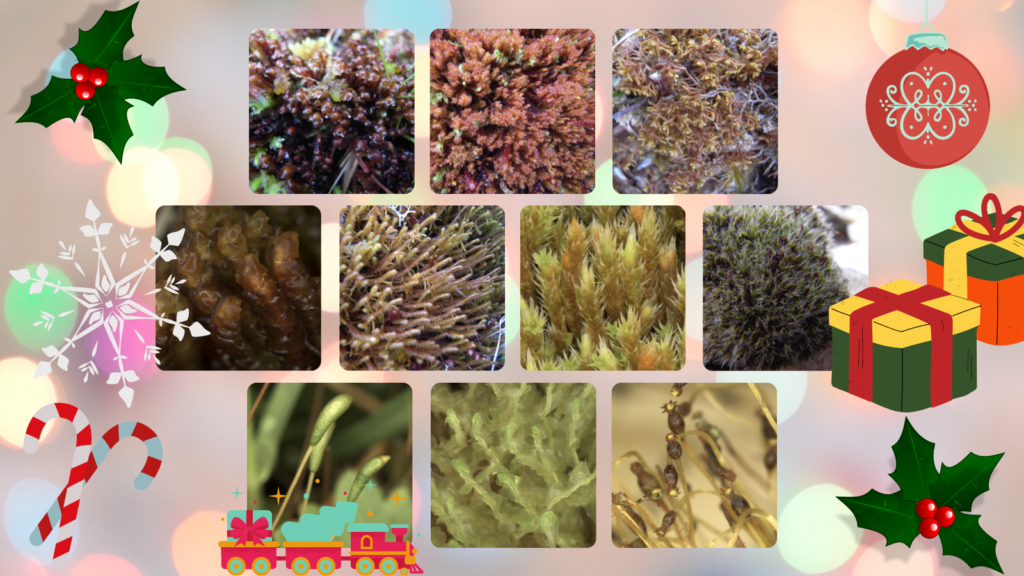
Collected on the slopes of Beinn Eighe National Nature Reserve by the DToL team from the Royal Botanic Garden Edinburgh, these species are (left to right, top to bottom): Scapania ornithopoides, Herbertus hutchinsiae, Mastigophora woodsii, Pleurozia purpurea, Herbertus borealis, Hedwigia stellata, Grimmia funalis, Meesia uliginosa, Harpanthus flotovianus and Splachnum sphaericum.
For more on our bryophytes collections, watch this video from BSBI’s Scottish Botanists conference in November.
9 Oxfordshire earthworms
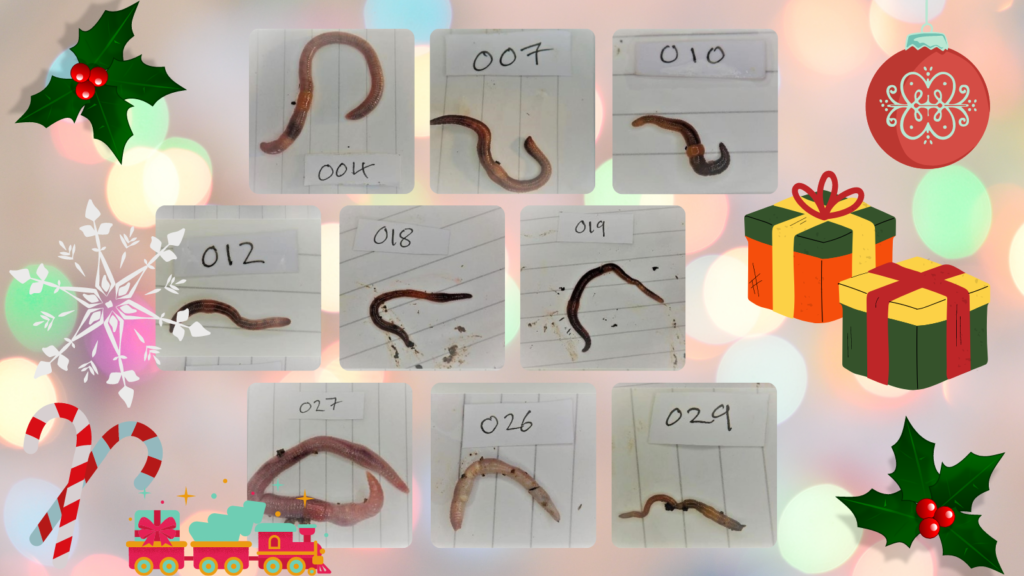
All of these earthworms were collected during one weekend of sampling at the University of Oxford’s Wytham Woods site. These nine species samples are: 004 Aporrectodea caliginosa; 007 Lumbricus castaneus; 010 Satchellius mammalis; 012 Bimastos rubidus; 018 Bimastos eiseni; 019 Eisenia fetida; 027 Octolasion cyaneum; 026 Allolobophora chlorotica; 029 Eiseniella tetraedra; 031 Lumbricus rubellus.
To find out more about this specific earthworm collecting trip, read this article by Kieron Derek Brown.
8 diverse diptera
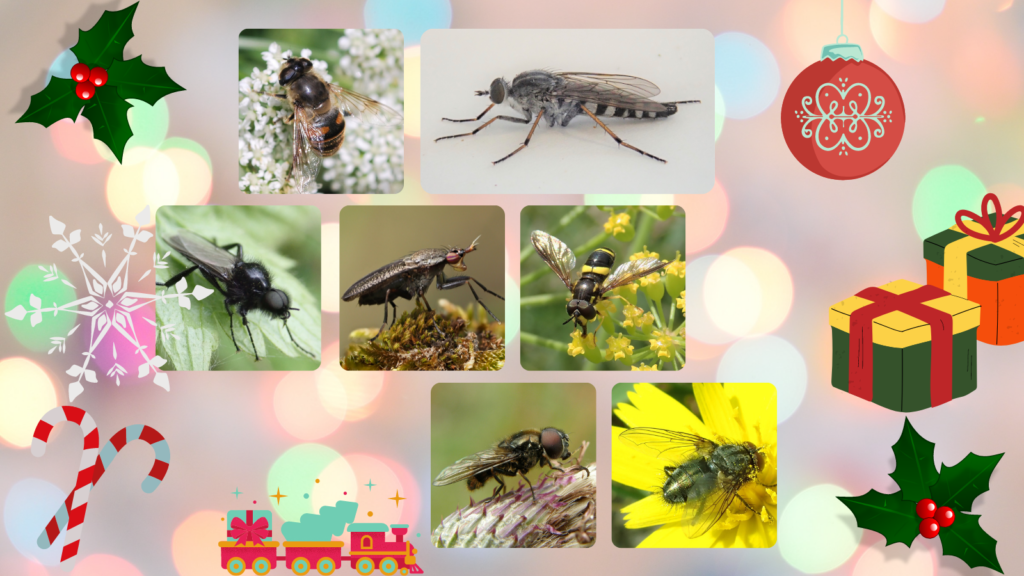
The species pictured here (left to right, top to bottom): common drone fly (Eristalis tenax), forest silver-stiletto fly (Pandivirilia melaleuca), St. Mark’s fly (Bibio marci), a snail-killing fly Coremacera marginata, two-banded wasp hoverfly (Chrysotoxum bicinctum), large burdock Cheilosia (Cheilosia vulpina) and bisetose emerald-bottle (Bellardia pandia).
7 types of apple
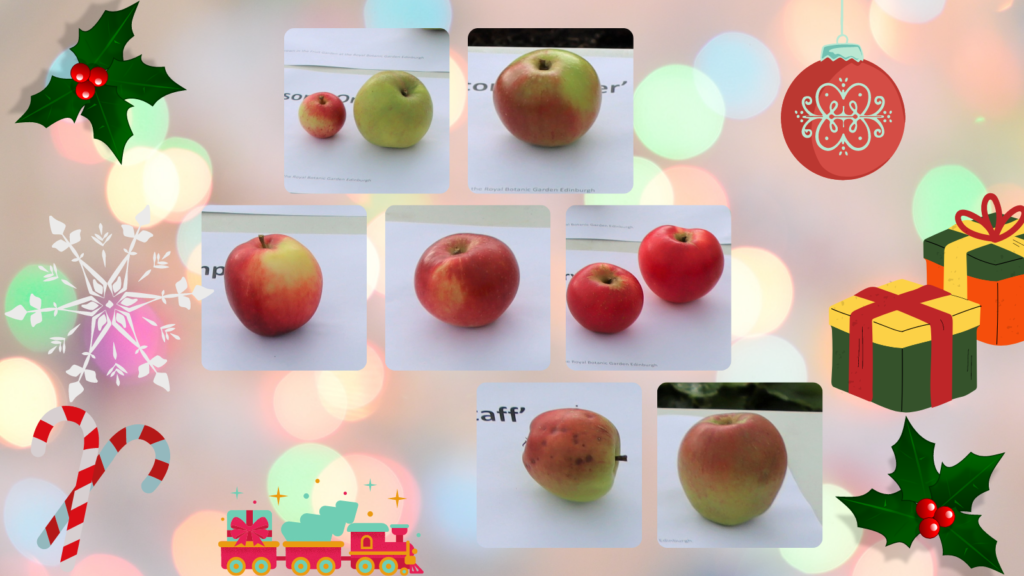
Not strictly individual species, these cultivars of the domestic apple (Malus domestica) were all part of our Apple DNA Trail at the Royal Botanic Gardens in Edinburgh. These varieties are (left to right, top to bottom): Ellison’s Orange, Newton’s Wonder, Scrumpy, Red Devil, Discovery, Red Falstaff and Laxton’s Superb.
Read more about our work on the DNA Apple Trail here.
6 algae cultures
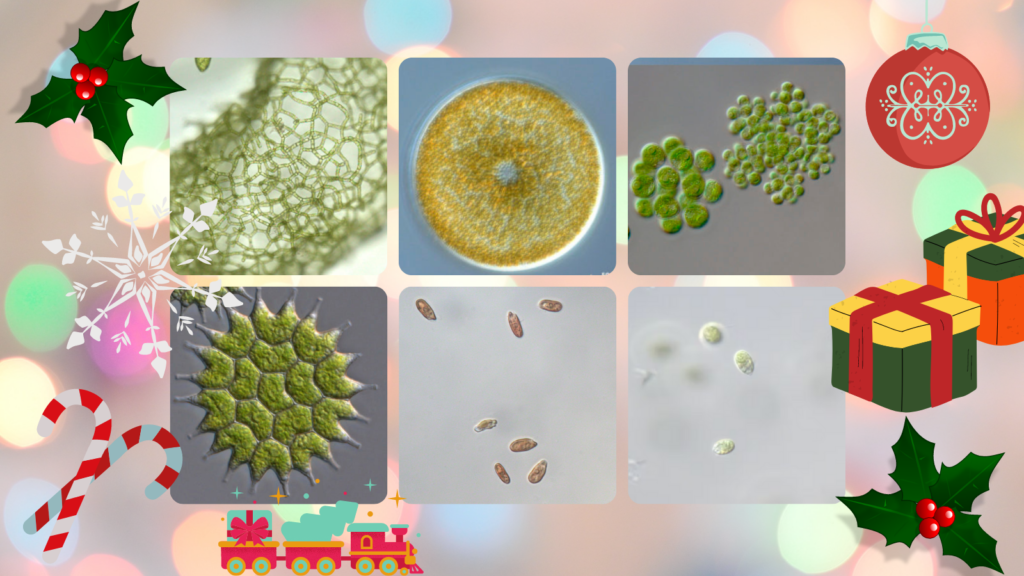
These algae species can be seen in magnificent detail under the microscopes at the Culture Collection of Algae and Protozoa (CCAP). They are (left to right, top to bottom): Hydrodictyon reticulatum, Coscinodiscus radiatus, Sphaerocystis schroeteri, Pseudopediastrum boryanum, Rhodomonas baltica and Dunaliella primolecta.
Read this article for more about the amazing work at CCAP.
5 festive fucoids
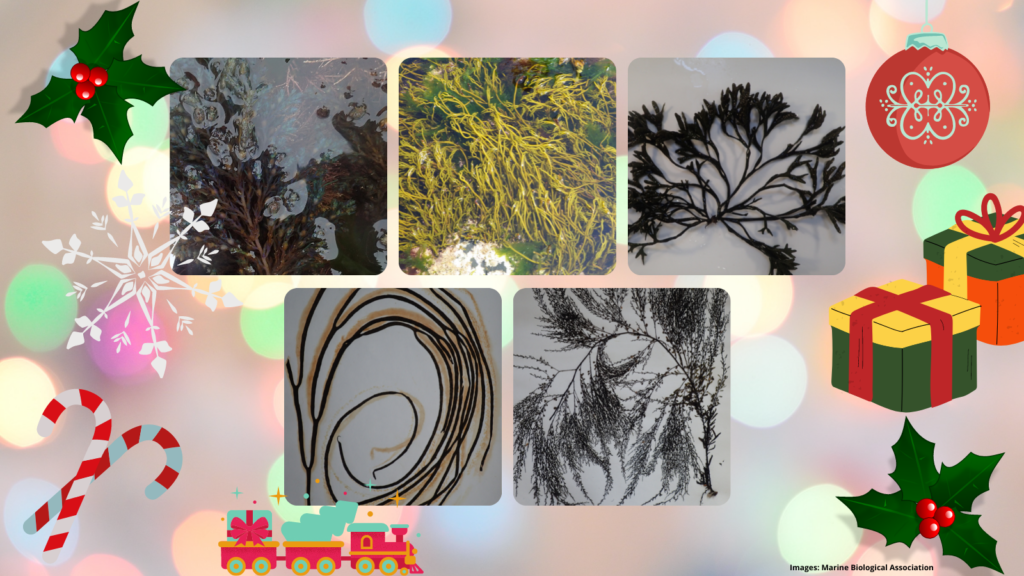
Fucoids are an order in the brown algae and include some of the common species of seaweed we find along our shores. The species pictured here are (left to right, top to bottom): bushy rainbow wrack (Carpodesmia tamariscifolia), brown forking weed (Bifurcaria bifurcata), channelled wrack (Pelvetia canaliculata), thongweed (Himanthalia elongata) and Japanese wireweed (Sargassum muticum).
4 fungi
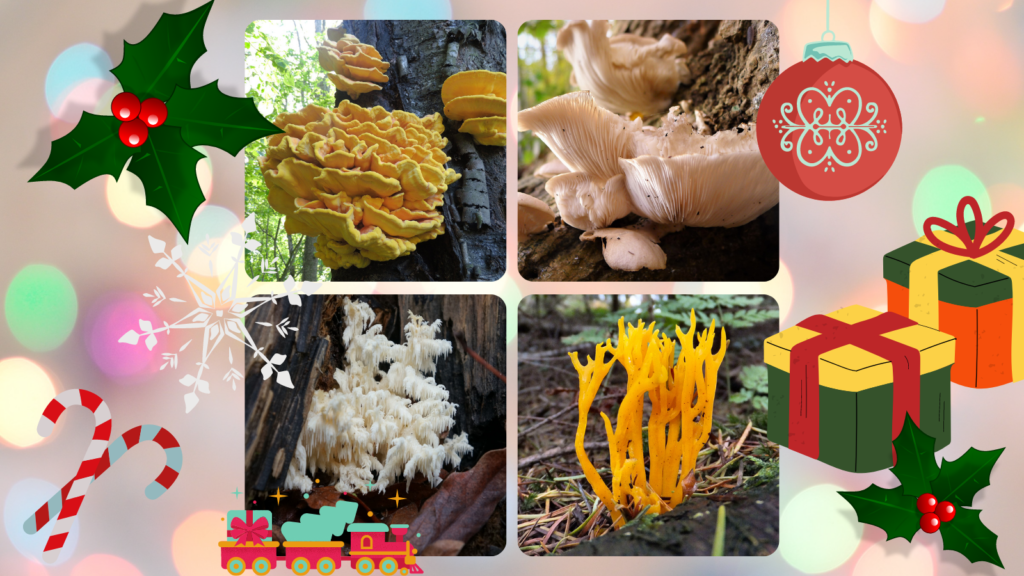
The species pictured here are (left to right, top to bottom): chicken of the woods (Laetiporus sulphureus), oyster mushroom (Pleurotus ostreatus), coral tooth (Hericium coralloides) and yellow stagshorn (Calocera viscosa).
3 coastal lichens
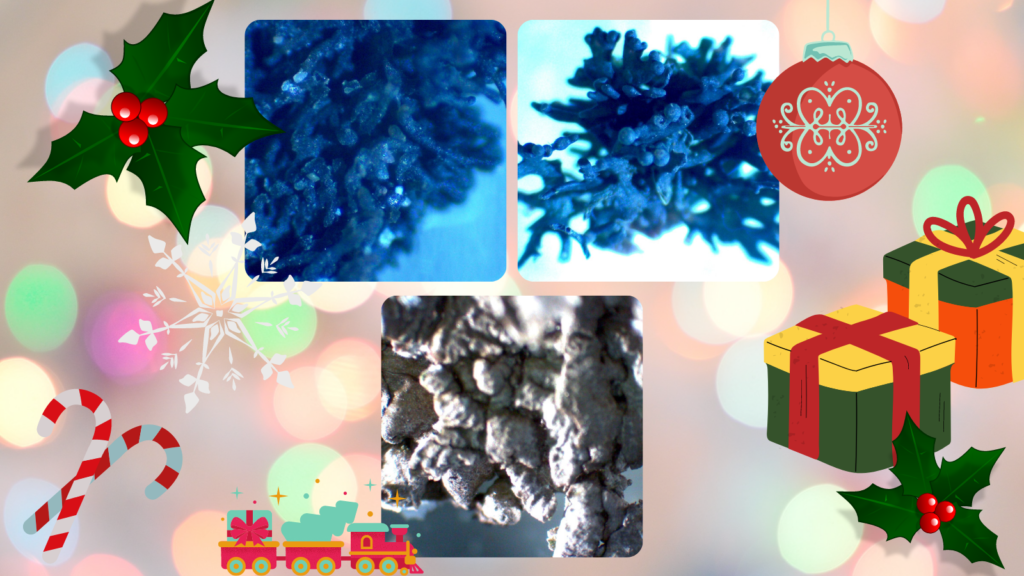
Lichens are a stable symbiotic relationship between fungi and either algae or cyanobacteria. These species from the waters around our islands are viewed under the microscopes of the Marine Biological Association. They are (clockwise from top left): Lichina confinus, Lichina pygmaea and Xanthoparmelia loxodes.
2 chordates
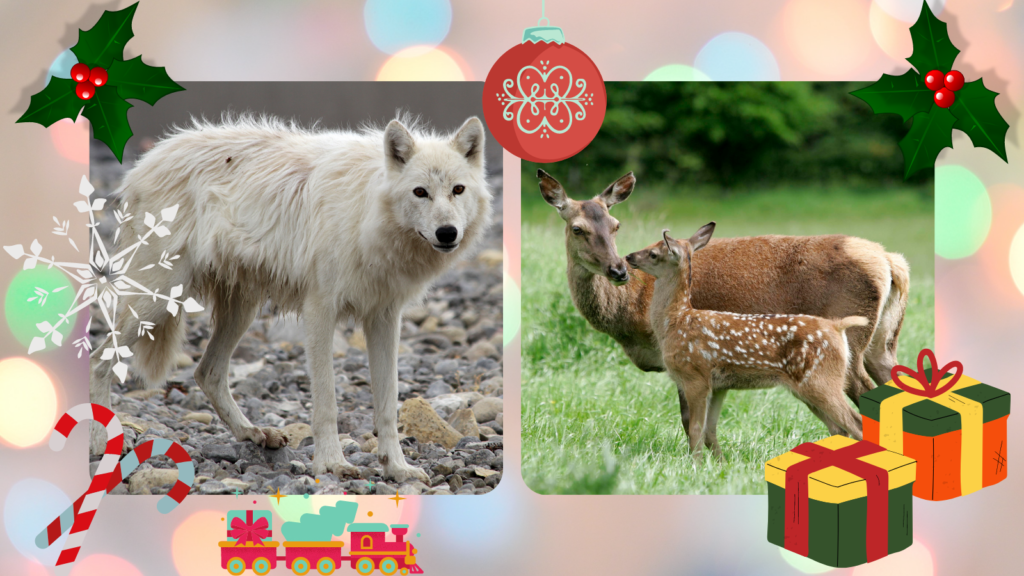
Two of Scotland’s most recognisable mammals: one eradicated 300 years ago, and one booming and in need of government-mandated population control due in part to the wolf-shaped hole in its ecosystem. The grey wolf (Canis lupus) and the red deer (Cervus elaphus).
And a partridge in a pear tree
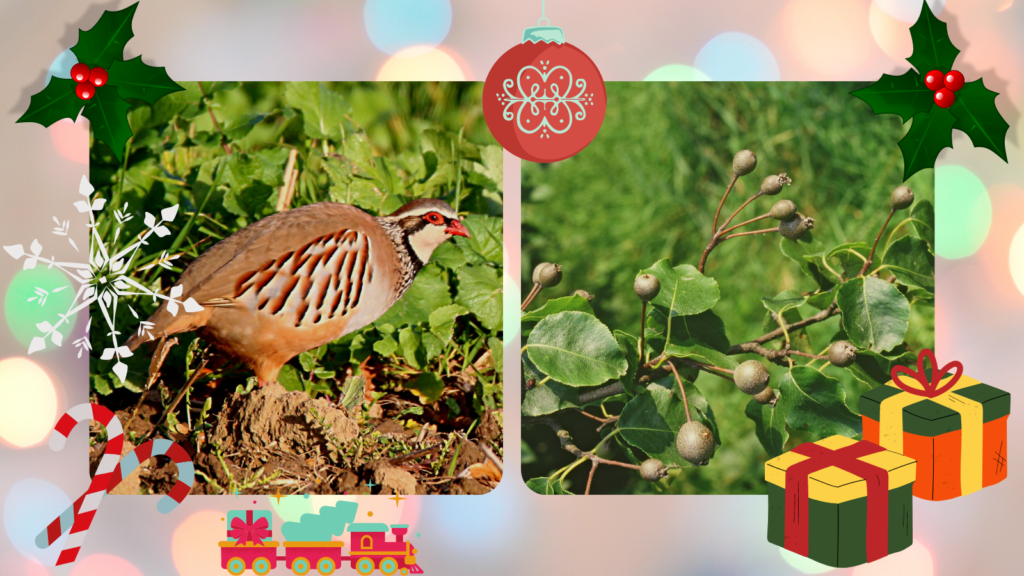
Although not yet in the Darwin Tree of Life genome-sequencing pipeline, this red-legged partridge (Alectoris rufa) will ultimately be part of the project’s 70,000 species total. Meanwhile this rare Plymouth pear (Pyrus cordata) is in the process of having its genome sequenced for the project at the Sanger Institute.
It might be a bit of festive fun, but this non-exhaustive run-through of some of the types of species we’re currently working on shows the huge variety of life in Britain and Ireland. And once the festive period is over, our scientists will return to collecting specimens, extracting DNA and sequencing genomes so that we can better understand and conserve our natural world.
